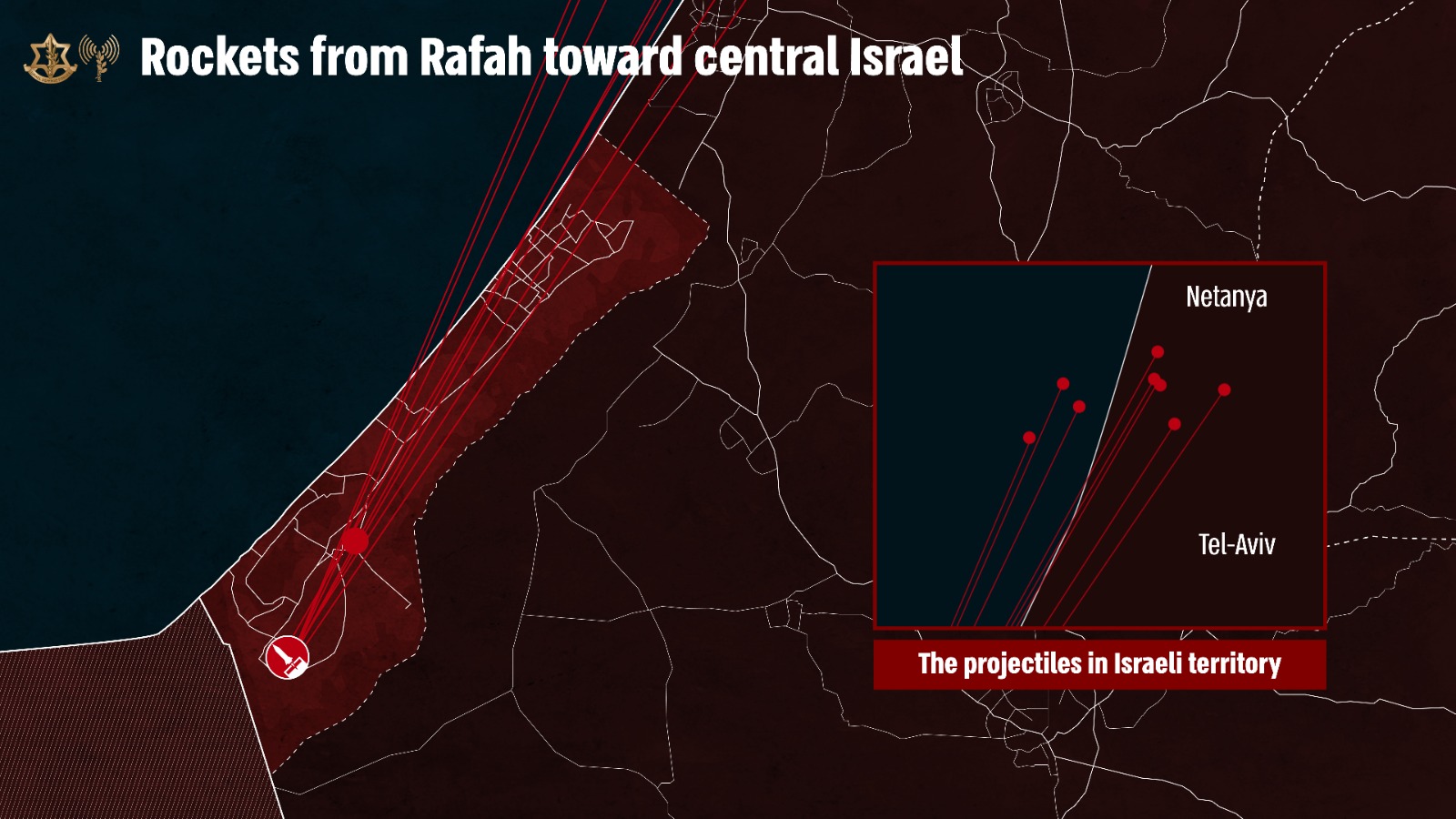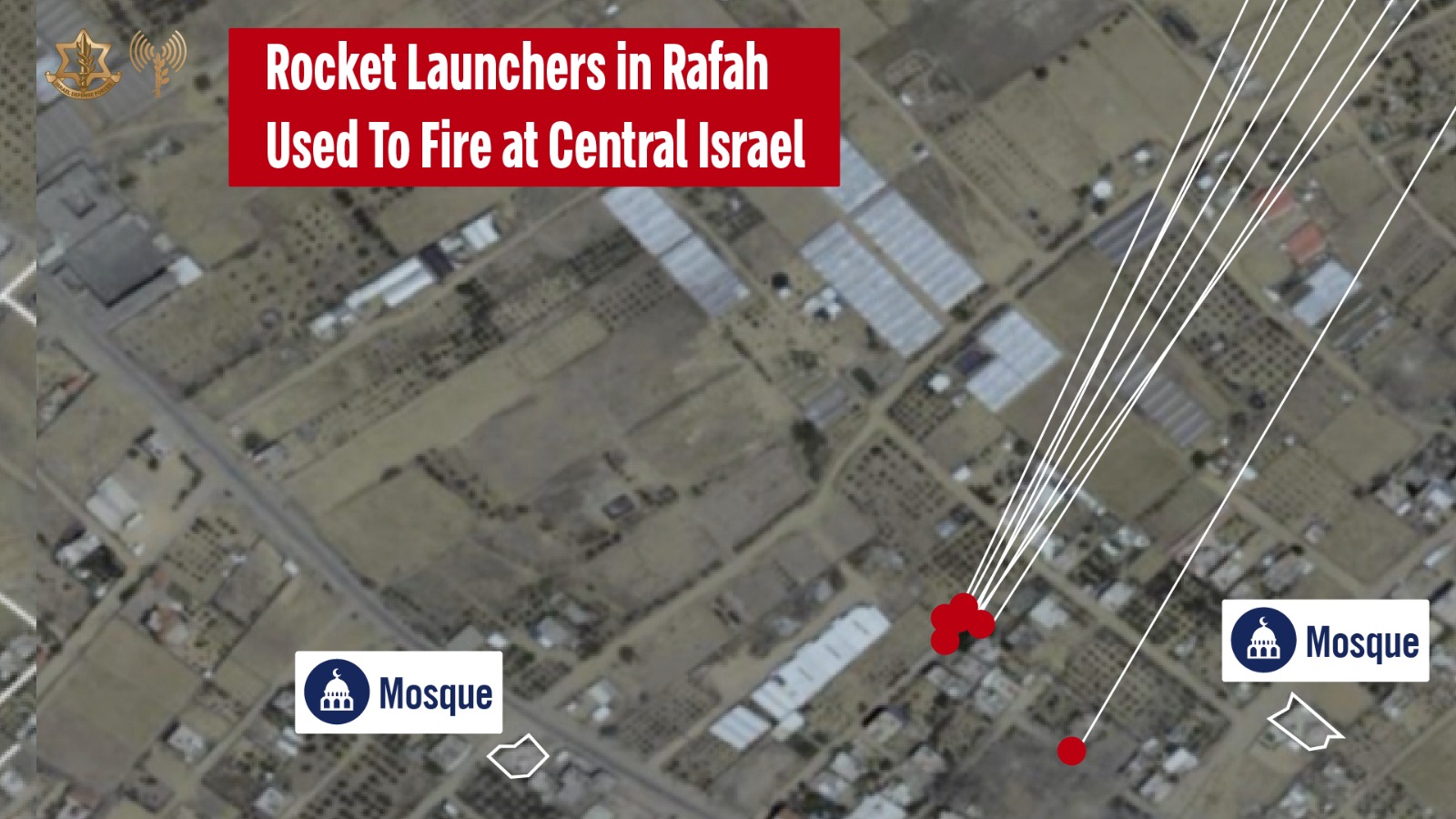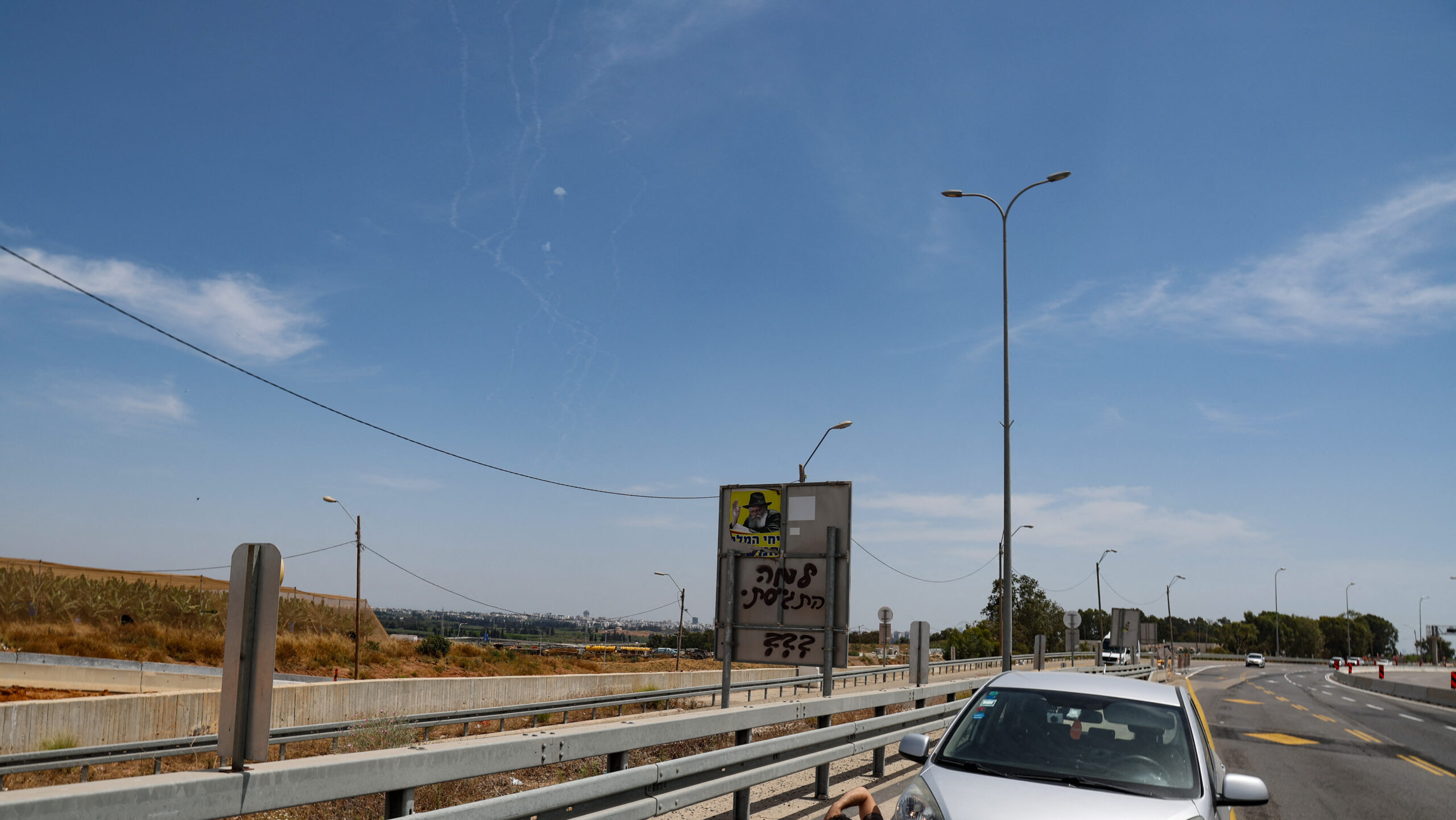Hamas’ Rocket Barrage on Center To Prevent IDF From Seizing Weapons, Expert Tells TML
After a four-month pause, Hamas fired eight rockets at cities north of Tel Aviv from Rafah, aiming to use long-range weapons before the IDF could seize them
In a significant escalation, Hamas fired eight rockets from Rafah at central Israel on Sunday afternoon, the first such attack in over four months. The IDF confirmed that the Iron Dome intercepted three rockets, while five landed in open areas. Minor injuries and property damage occurred, but no one was seriously wounded.
For many, the attack underscores the persistent threat from Hamas despite the prolonged military campaign following Oct. 7. However, an IDF spokesperson informed The Media Line that the Israeli army wasn’t surprised by the attack and that it “identified multiple rocket launching infrastructures positioned next to civilian areas in Rafah but can’t comment on details due to the security of ongoing operations. The IDF is aware of the remaining Hamas forces in Rafah.”
Prof. Kobi Michael, a senior researcher at Israel’s Institute for National Security Studies (INSS) and the Misgav Institute, shared his analysis with The Media Line.
It’s not surprising at all that Hamas is still able to make such an attack against the center of Israel. The IDF is only entering Rafah now, and it’s yet to reach Hamas’ center of gravity in there.
“It’s not surprising at all that Hamas is still able to make such an attack against the center of Israel. The IDF is only entering Rafah now, and it’s yet to reach Hamas’ center of gravity in there. The IDF knows they still have long-range rocket capability. They keep saying they’ll attack Tel Aviv, and they did launch these rockets like they’ve been attacking many other cities in Israel as well,” he said.
According to Michael, Hamas used to have huge quantities of long-range rockets throughout the Gaza Strip. “Israel succeeded in destroying and dismantling most of Hamas’ arsenal, but most importantly, we destroyed their capacity to manufacture more rockets. These rockets [used in] the attack against the Tel Aviv area on Sunday afternoon are some of their remaining capacity in Rafah, and this is one of the reasons for the [IDF] ground operation there, to destroy all their remaining capacity to attack Israel,” he said.
There are many tunnels in Rafah, and I estimate Hamas still has four battalions there. This is the exact reason the IDF needs to go there.
“There are many tunnels in Rafah, and I estimate Hamas still has four battalions there. This is the exact reason the IDF needs to go there. In the next two or three weeks, as the IDF concludes its operations in Rafah, these remaining Hamas terrorists will try to launch rockets to avoid the weapons from being captured by the IDF,” he explained.
Following recent IDF operations in Rafah, the army issued a press release minutes before Hamas launched the attack on Sunday. In the document, the IDF informed the public that “during targeted operations in the area of Rafah, terrorist operatives who attempted to attack IDF troops were eliminated. During scans in the area, IDF troops located tunnel shafts and large quantities of weapons, including AK-47s, RPGs, grenades, and explosives. In addition, two rocket launchers in the Rafah area that were aimed at Kerem Shalom were struck overnight.”

(Israel Defense Forces)
Michael noted that “as Hamas is forced to launch its remaining rockets to avoid their most valuable long-range missiles from being captured by the IDF, it also ends up revealing where the launching infrastructure is, allowing for the [Israeli Air Force] IAF to paralyze their capacity to relaunch from these places. In a way, when Hamas attacks Israel like this, it allows Israel to dismantle them faster.”
A few hours after Hamas’ rocket barrage on the Tel Aviv area, the IDF issued a press release saying that the IAF struck the launch sites of the rockets fired at central Israel. “Earlier today (Sunday), eight projectiles were fired from the area of Rafah toward central Israel. The rocket launcher, which was situated near two mosques in the area of Rafah, was struck by the IAF shortly after. This is further evidence of the Hamas terrorist organization’s systematic exploitation of civilian areas for its terrorist activity, including rocket attacks on Israeli civilians,” said the statement.
At this stage, Hamas is less like the terrorist organization that it was, as they transformed into a guerrilla-terrorist warfare.
According to Michael, “At this stage, Hamas is less like the terrorist organization that it was, as they transformed into a guerrilla-terrorist warfare. They can harm troops in the [Gaza] Strip, but their ability to hurt Israeli civilians outside the Strip has been significantly reduced. I estimate that, at this point, Hamas still has a few dozen long-range missiles that can reach Tel Aviv and other areas and a few hundred short-range rockets that can reach between eight to ten kilometers,” he said.

(Israel Defense Forces)
“Until a couple of weeks ago, the tunnels crossing between Rafah and Egypt were still active, so we can assume they brought materials to manufacture short-range rockets,” continued Michael. “But these long-range missiles are much more complicated to manufacture, and the IDF destroyed the manufacturing plant they had in the Nuseirat area, closer to the center of Gaza.”
When they attack Israel’s center, at this point in the war, they want to send the message that they still can hit Israel. However, and perhaps even more important, Hamas is also talking to the local population in Gaza and is saying that Hamas will remain as a sovereign power in the Strip.
Hamas warfare has an extensive cognitive dimension, explained the professor. “When they attack Israel’s center, at this point in the war, they want to send the message that they still can hit Israel. However, and perhaps even more important, Hamas is also talking to the local population in Gaza and is saying that Hamas will remain as a sovereign power in the Strip.”
However, the attacks today also suggest something more, Michael asserted. “The spontaneity of the rocket barrage against the Tel Aviv area on Sunday afternoon, seemingly random and knowingly insufficient to overpower the Iron Dome, suggests that Hamas is facing the choice of launching the rockets like that or having the IDF capture their remaining long-range, expensive missiles. Many people talk about the ‘day-after’ moment, but this is already it,” he said.
“In three or four weeks, the IDF will have better control over Rafah and the rest of Gaza in a way that prevents Hamas from ever recovering. After this moment is reached, Israel, alongside the US and other allies in the Middle East, will work to gradually transfer the control of Gaza to the local population, organized and in dialogue with the Palestinian Authority in Ramallah, while also withdrawing the troops from the strip,” Michael concluded.

